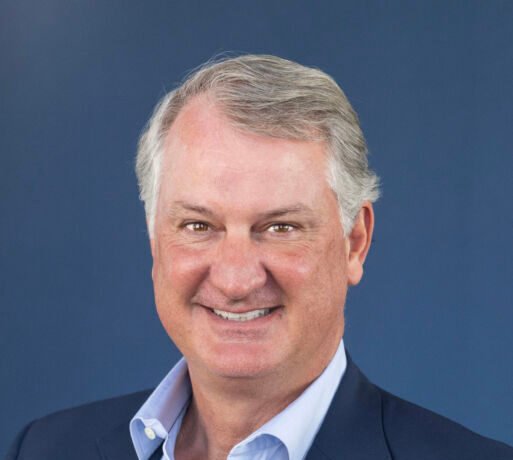Global private markets are facing a serious liquidity crunch.
Across London, Frankfurt, New York, and Singapore, IPO windows remain largely shut, M&A activity is dragging, and valuations are stuck in a holding pattern. The result? A backlog of aging private assets with few traditional exit options – and growing pressure on general partners to return capital. DPI metrics are underwhelming, and LPs are becoming increasingly vocal about it.
At the same time, institutional investors – ranging from UK pension funds to continental European family offices – are reevaluating exposure to illiquid portfolios that may take years to recover (if ever).
The need for alternative liquidity is no longer a niche problem, it’s the defining theme of the current cycle.
Inflexion’s £2.3 billion continuation vehicle is one recent example that speaks volumes. Backed by AlpInvest, HarbourVest, and Lexington, the deal returned £1.5 billion to LPs at a 3.4x realized return while simultaneously reinvesting in four strong-performing companies. It wasn’t just a good outcome, it was a blueprint for how structured secondaries can solve today’s liquidity gridlock.
Why GP-led Needs an Upgrade to GP-led+
Over the last decade, GP-led secondaries have matured into a core portfolio management tool that allow managers to extend runway, crystallize value, and retain upside. But the next wave of innovation needs to go further. At Labyrinth, we call this extra mile GP-led+ – an expanded toolkit that includes continuation vehicles, strip sales, fund restructurings plus direct secondaries and hybrids.
The “+” isn’t just branding—it’s a strategic upgrade. GP-led+ gives sponsors and stakeholders the flexibility to tailor liquidity and capital solutions to specific company or fund dynamics.
Want to buy out early investors in a single asset, but also inject fresh capital? That’s a hybrid. Want to purchase structured equity from insiders at a discount and reset governance? That’s a direct secondary. These solutions aren’t theoretical – we’ve been executing them globally for over 15 years.
European LPs in particular stand to benefit from managers going the extra mile. GP-led+ offers downside protection through structure, upside through price, and better alignment through bespoke governance. For GPs, it creates time, space, and capital without cutting off upside. And for allocators looking for real returns in today’s market, it offers shorter durations, greater diversification, and alpha from complexity.
Labyrinth focuses exclusively on these opportunities, targeting transactions between $5 million and $50 million – an overlooked segment that’s too small for mega-funds but full of mispriced assets for those willing to do the work.
A Global Shift in Mindset
In Europe, we’re seeing a cultural shift with secondaries. LPs and regulators are increasingly comfortable with GP-led mechanics, and GPs are now building continuation vehicle and liquidity planning into fund timelines proactively, not reactively.
Inflexion’s landmark deal is a testament to that shift.
Rather than wait for exits that may never materialize, they secured liquidity and doubled down on winners like Aspen Pumps and Rosemont Pharmaceuticals. The market noticed, and so did other GPs now exploring similar playbooks.
This normalization of secondaries as a first-choice option, rather than a last resort, marks a unique turning point that shouldn’t be overlooked.
Smaller Deals, Sharper Structures
While billion-dollar continuation vehicles dominate headlines, many of the most compelling risk-adjusted returns are being generated in smaller, structured transactions – typically in the $10 million to $50 million range. We see the sub-$50 million segment as particularly rich in both volume and number of investment opportunities, offering differentiated access to venture-backed or growth-stage companies that are mature in their business models but with substantial value creation left for investors.
These transactions allow for customized structuring – such as preferred returns, ratchets, and investor-friendly waterfalls – that can meaningfully shape outcomes. Built-in downside protection is often achieved through thoughtful entry terms, while a reset in governance can realign stakeholders and strengthen long-term decision-making. In many cases, the hold periods are shorter as well, which offer investors a quicker path to realization without compromising on return potential.
This part of the market tends to be less intermediated and more flexible, creating space for tailored solutions that aren’t always possible in large, syndicated deals. Smaller deal size doesn’t mean simpler, or even sub-scale companies, but it often means more control, more creativity, and better alignment.
There’s a misconception that GP-led secondaries are dumping grounds for underperformers. That couldn’t be further from the truth. The best GP-led+ deals involve companies with real growth, strong governance, and enhanced alignment.
That said, these aren’t “plug and play” transactions. They require nuance, especially across jurisdictions, LP bases, and regulatory frameworks. If you don’t know how to manage a cross-border LP syndicate, or how to restructure a deal for insider alignment, you risk damaging relationships and undermining the very liquidity you’re trying to create for private market stakeholders.
A Global Playbook for Modern Liquidity
For GPs: Build secondaries into your roadmap early. Don’t wait for your fund to stall before thinking about optionality.
For LPs: Demand transparency. Look under the hood of continuation vehicles. Understand the alignment. And most importantly, scrutinize the structure.
For allocators: These mid-sized, structured secondaries are a source of uncorrelated returns with shorter durations than co-investments or traditional buyouts. They deserve a dedicated allocation.
The LP-led secondaries market is mature. GP-led secondaries are ascendant. And GP-led+ – with its broader toolkit and better alignment – is emerging as the most adaptable liquidity engine in private markets.
We’ve moved past the idea of secondaries as rescue missions. They are now the core building blocks of a long-term strategy. The smartest investors and managers are already leaning in.
In this market, liquidity is leverage, and structured secondaries – done right – are the fulcrum.
Chris Lawrence is the founder and Managing Partner of Labyrinth Capital Partners, a firm focused on GP-led+ secondaries in the $5M to $50M range. He has led or co-led over $1.8B in secondary transactions globally.

